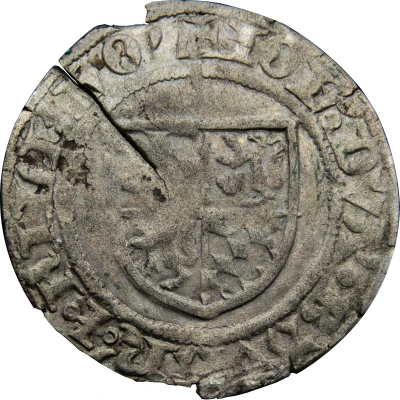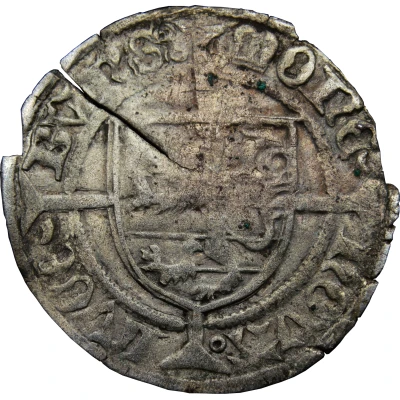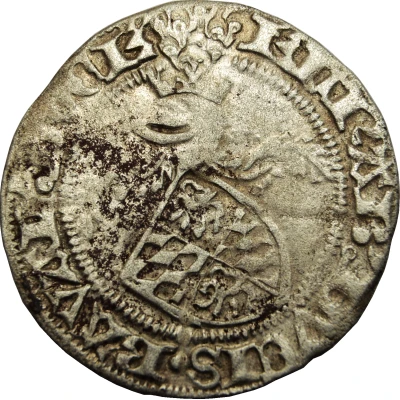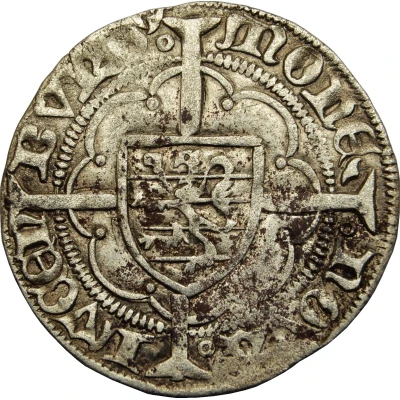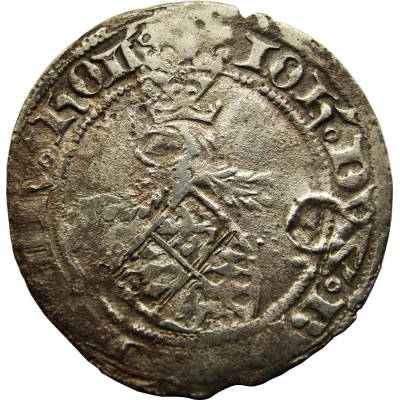
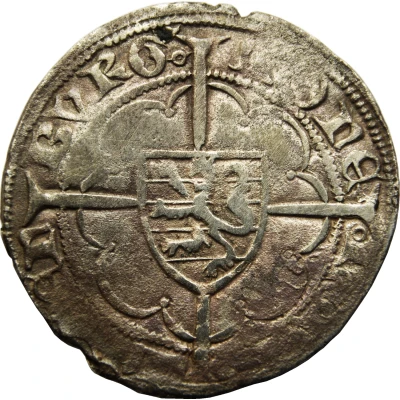

© smy77 (CC BY-NC-SA)
½ Gros - John of Bavaria 2nd type ND
| Silver | 1.28 g | 23.3 mm |
| Issuer | Duchy of Luxembourg (Luxembourg) |
|---|---|
| Duke | John II the Pitiless (1418-1425) |
| Type | Standard circulation coin |
| Years | 1424-1425 |
| Value | ½ Gros (1⁄80) |
| Currency | Florin (1353-1713) |
| Composition | Silver |
| Weight | 1.28 g |
| Diameter | 23.3 mm |
| Thickness | 0.5 mm |
| Shape | Round (irregular) |
| Technique | Hammered |
| Demonetized | Yes |
| Updated | 2024-10-06 |
| Numista | N#85927 |
|---|---|
| Rarity index | 92% |
Reverse
Luxemburgish shield with a rampant lion to the left, on a field of five pieces, laid on a long patted cross, dividing the legend, all in an epicycloid with double rib ending in globules. Legend between two pearled circles.
Script: Latin (uncial)
Lettering: MOnE' — ₀nOVA₀ — LVCEn — BVRG'₀
Lettering (regular font): MONE' — ₀NOVA₀ — LVCEN — BVRG'₀
Translation: New currency of Luxembourg
Edge
Plain
Comment
Type part of the second issue of John of Bavaria (1424 - 1425), undated, struck at the Luxembourg mint.Coin of which no variant of the legend of the obverse is known. Only two variants of the reverse are known:
MOnE. NOVA. LVCEn. BVRG.
MOnE. NOVA. LVECn. BVRG.
Weiller lists 30 pieces with an average weight of 1.25 grams.
Extremes in weight: 1.06 g. and 1.48 g. (Weiller, p. 101)
Rare enough piece, the majority of known pieces were found in 1864 in Everlange (8) and 1960 in Luxembourg-city (24).
Interesting fact
One interesting fact about the ½ Gros - John of Bavaria (2nd type) ND (1424-1425) coin from Duchy of Luxembourg (Luxembourg) is that it was minted during a time of great political and economic change in Europe. The coin was issued during the reign of John of Bavaria, who was the Duke of Luxembourg from 1418 to 1425. During his reign, Luxembourg was facing economic challenges due to the decline of the textile industry and the impact of the Hussite Wars. Despite these challenges, the minting of this coin suggests that there was still a demand for silver coins in circulation, and that the Duchy of Luxembourg was able to maintain some level of economic stability during this time.
